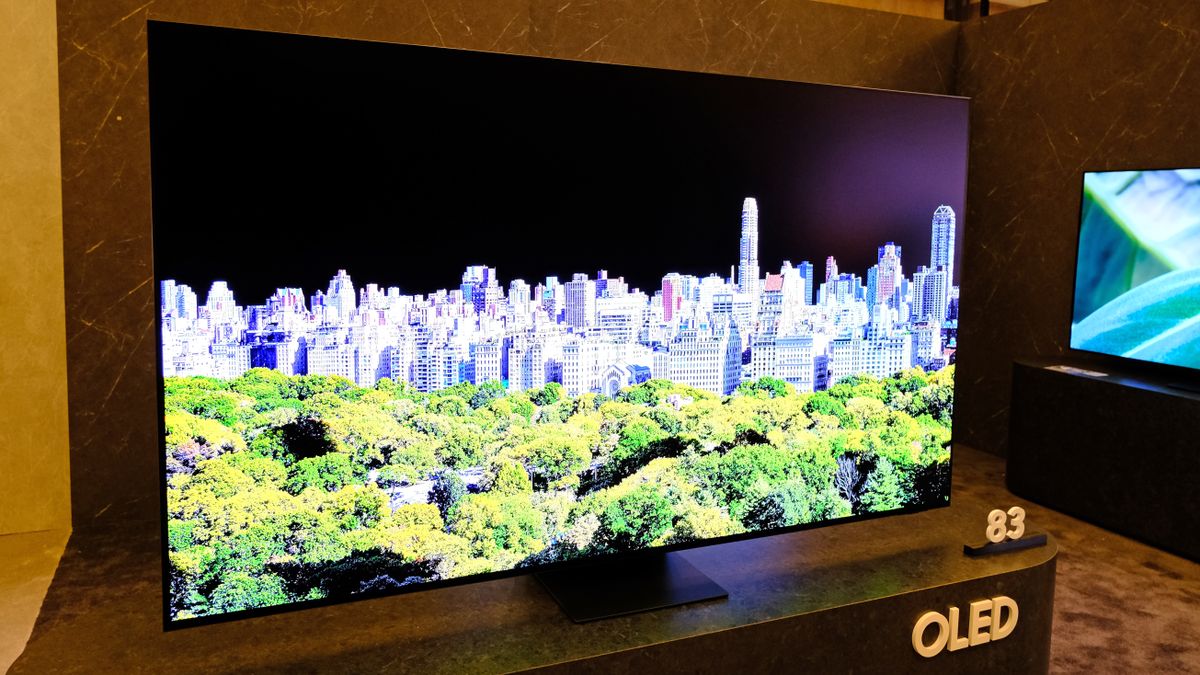At CES 2025, Samsung unveiled its next flagship OLED TV, the Samsung S95F. While the fanciest feature may be the highly impressive OLED Glare Free 2.0 reflection-reduction coating, there were two other elements that Samsung shouted about: a new 83-inch size option (along with the 55-inch, 65-inch and 77-inch sizes already available); and the promise of dazzling brightness at up to 4,000 nits.
Given that in our testing of the best OLED TVs, we have yet to measure one that makes it past 2,000 nits of brightness, I had to know more about this, and I spoke to Samsung about exactly what to expect.
One reason I wasn’t sure about it was that the new 83-inch model doesn’t use the same Samsung QD-OLED screen technology as the other sizes; instead, it uses a W-OLED panel, made by LG Display. Samsung didn’t confirm this, but given the brightness claims, it must be the latest-generation ‘four-stack’ OLED panel from LG.
Samsung says that every size of S95F will have the same level of performance, including the promise of hitting 4,000 nits of peak HDR brightness. However, Samsung specified that this claim is definitely an extreme one – something the panel is capable of doing in real life, but it’s unlikely to happen much. The company told me this can be hit in a 3% HDR window for a few seconds, and will presumably require a particular image mode to achieve.
The more useful real-world measurement, and no less impressive in that context, is that Samsung says all models will be able to hit 2,000 nits of peak HDR brightness in a 10% window, and this can be sustained.
That is still higher than we’ve measured from any OLED TV to date, and really brings OLED TVs into line with the best mini-LED TVs for peak brightness (at least, the mainstream ones – not the likes of the Hisense 110UX and its claims of up to 10,000 nits).
Fullscreen brightness for this year’s OLED TVs seems to be improved as well – there’s talk of the S95F jumping to just under 400 nits, from about 320 nits for the S95D. The LG G5 flagship OLED promises a 40% jump in fullscreen brightness, which would put it at about 350 nits.
However, those figures are still much lower than higher-end mini-LED TVs, which can hit 500-600 nits of fullscreen brightness, which is why we rate them as the best TVs for sport, where brightness across the whole screen is important, in order to make everything bright and vibrant at once, and to beat reflections (although that’s what Samsung’s Glare Free coating is supposed to help with).
Time to drop the old concerns?
In the past, when Samsung has mixed QD-OLED and W-OLED panels at different screen sizes, it’s given us a big headache. Take the Samsung S90C OLED TV, which we rated at the best TV overall for a long time… at least, at most sizes. Just like the Samsung S95F, that set came in 55-inch, 65-inch, 77-inch and 83-inch sizes – and the three smaller sizes were made with a Samsung QD-OLED screen, while the 83-inch size was an LG W-OLED panel.
The problem was that, at the time, the mid-range QD-OLED screens were far brighter than LG’s mid-range W-OLED screens, so we basically just had to say that we didn’t recommend the 83-inch size, because we felt that the 83-inch LG C3 was better value given that it used the same panel.
So in the past, every time I heard that Samsung was using different panel types at different sizes for one of its OLEDs, I got an instant migraine. We knew the performance of these panels, and we knew they couldn’t be equivalent.
But Samsung says that’s not the case in the S95F. I was told very confidently that the promise of 4,000 nits of extreme peak brightness and 2,000 nits of sustained peak brightness will apply to the 83-inch W-OLED size as well as the QD-OLED size.
Obviously, we’re aiming to measure and confirm this ourselves – I can only hope we’re about to get our hands on it sooner rather than later, because the S95F is absolutely one of the most exciting TVs of 2025.





